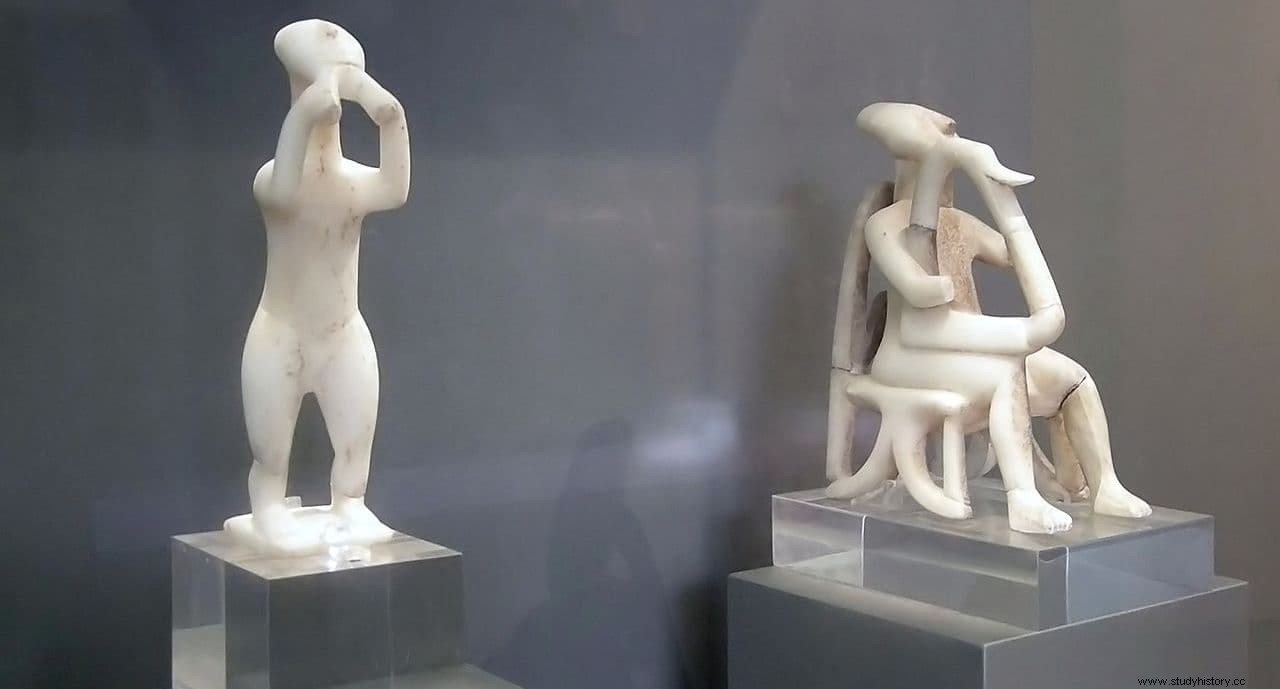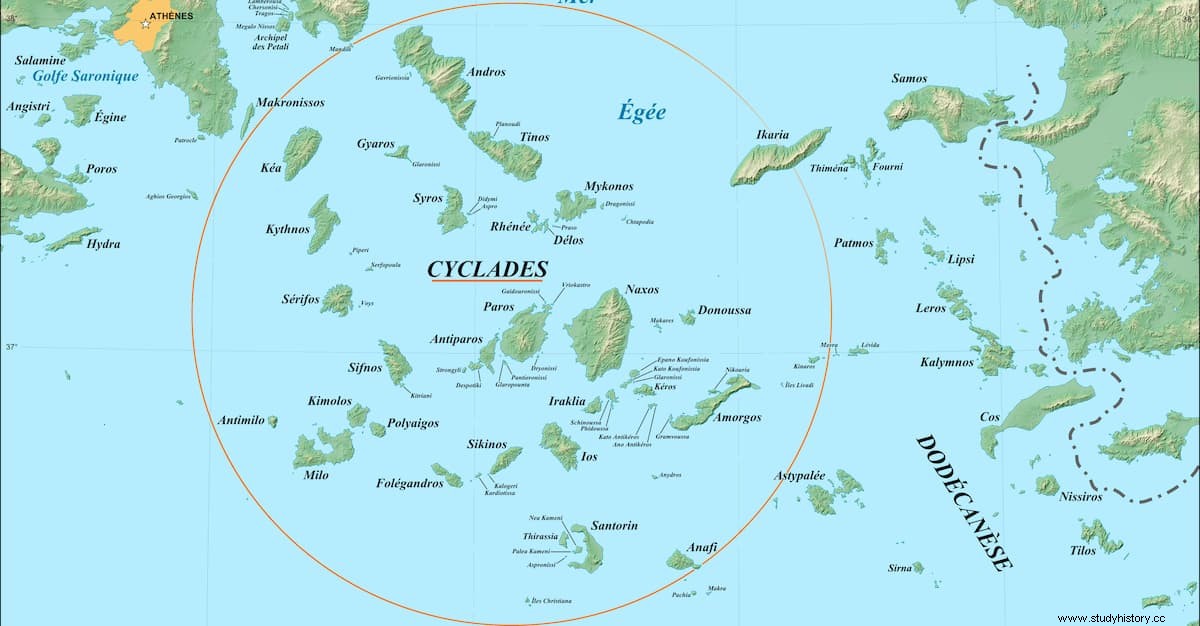The small, uninhabited island of Keros today is one of the Lesser Cyclades, located in the Aegean about 10 kilometers from Naxos.
The place is important because it is believed that the oldest island sanctuary was there. that is known, the first in which the difficulty of access only by sea did not discourage pilgrims who came from all over the Aegean environment.
And they did it to make a curious offering. They carried broken pieces of statuettes, pieces of pottery, and fragments of other marble objects. They were found there by archaeologists in the first excavation campaign carried out in 1963, and they have continued to turn up in campaigns since 2006 led by Professor Colin Renfrew. Hundreds of these broken pieces that they tried to put together like a puzzle, trying to reconstruct at least one figurine or ceramic vessel.

It was all in vain because no piece fits with another. They were all broken before reaching Keros, they all come from different places, and they were deposited by the pilgrims as a kind of offering.
Before the arrival of the archaeologists, the place suffered intense looting and looting. As early as 1884, when the famous Cycladic sculptures of the Pied Piper and the Harpist appeared there, antiquities dealers set their sights on it and for decades dedicated themselves to doing business with the figurines, most of which are now scattered among private collectors. and museums.
It is estimated that at least half of all that there were were part of the Collection of Hans Erlenmeyer, who acquired them in the 1950s from a Greek dealer. Among them was the largest Cycladic idol ever known, as well as some 150 other fragments, ceramics and various objects from Keros. The entire collection was sold between 1988 and 1998 through London auction houses.
Today the island is uninhabited, but its 15 square kilometers were home to a populous community between 2750 and 2550 BC, when the sanctuary was at its height.

The archaeologists found that the foundation of the sanctuary dates from around 3000 BC. during the Bronze Age. In the recent season of excavations, the results of which are now being announced, Renfrew's team discovered a submerged stairway connecting Mount Kavos, the highest point on the island at 432 meters, with the islet of Daskalio (covering an area of 7,000 square meters), located along the west coast of Keros.
According to Renfrew it seems that it was mandatory to bring a piece of a broken statuette and deposit it on the sacred island of Keros, possibly remaining some days in Daskalio while the ceremony was completed .
The importance of the Keros sanctuary in the Bronze Age, whose decline began around 2000 BC, has been reinforced by new finds on the islet of Daskalio. In 2008, the remains of a building related to the sanctuary of 16 meters long by 4 wide, dated between 2550 and 2400 BC, which is considered the largest known building of the Cycladic period, the most spectacular and unparalleled in all, appeared. the Aegean.
This and other monumental buildings are found in Daskalio, while Mount Kavos de Keros, where the offerings have appeared, does not have important structures or large building complexes. The sanctuary, archaeologists believe, predates any other ceremonial center in Aegean prehistory by about 500 years.
